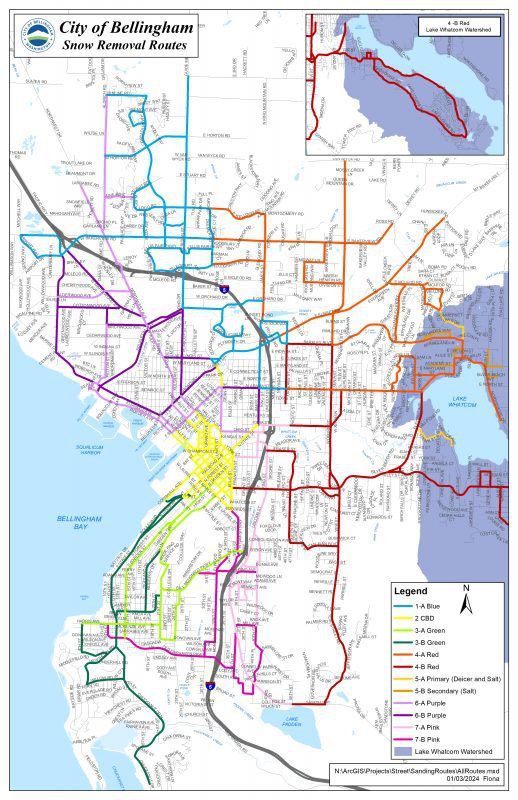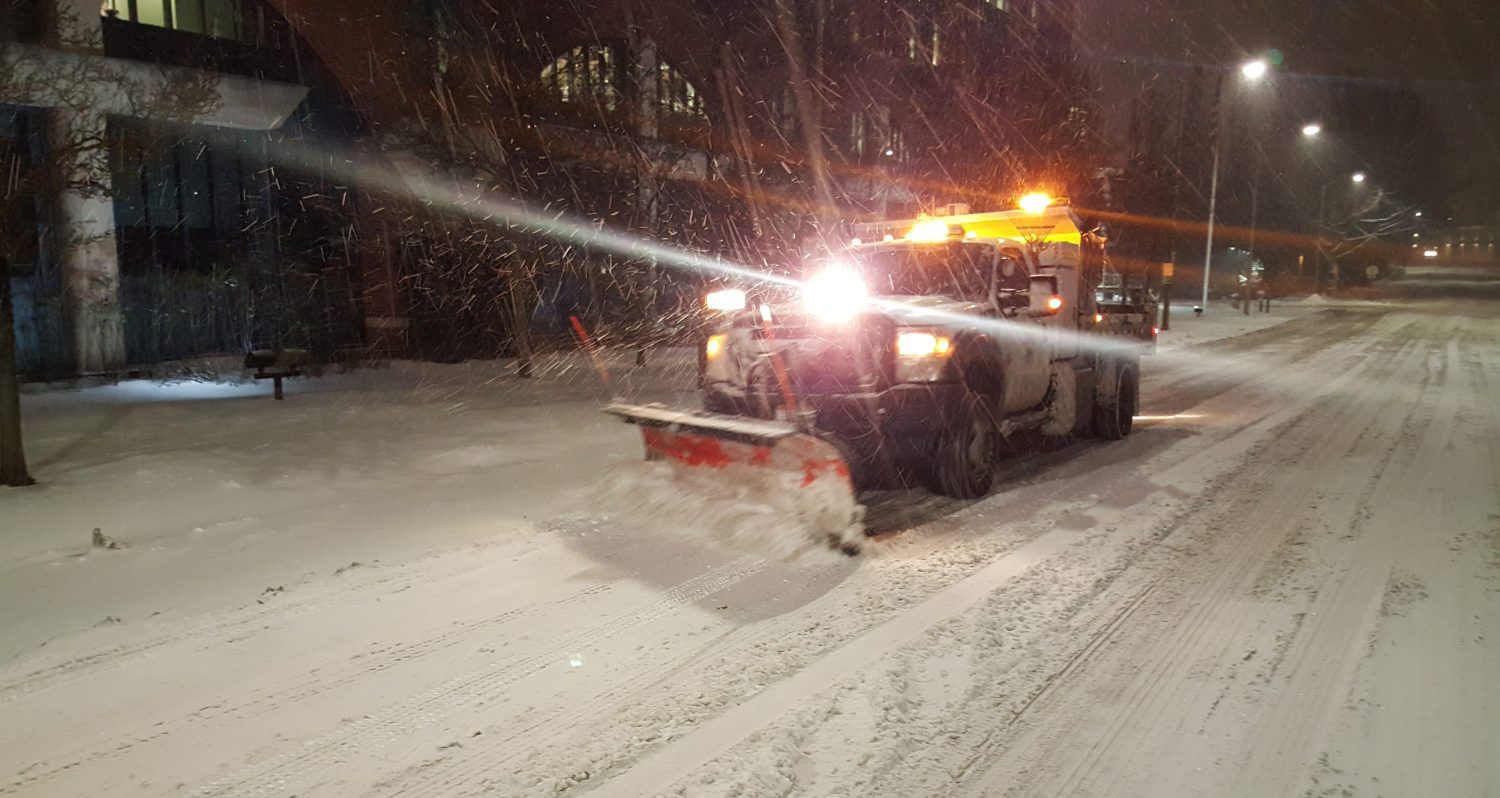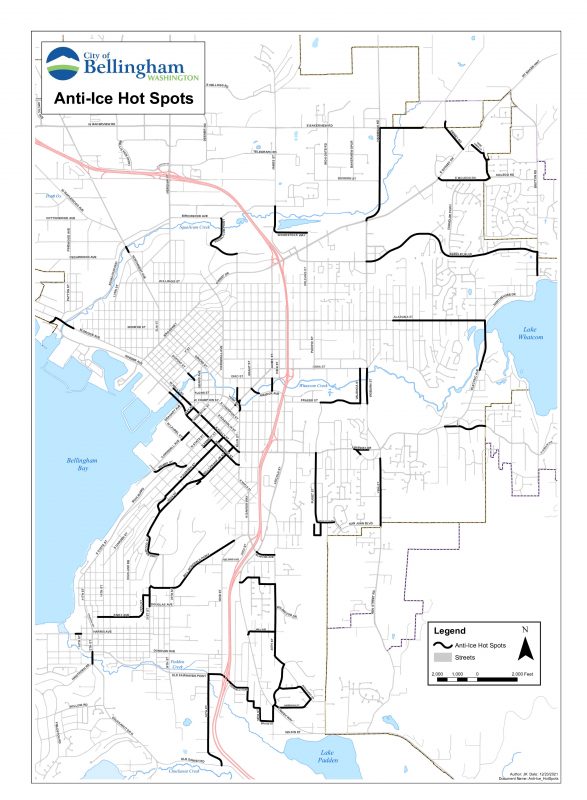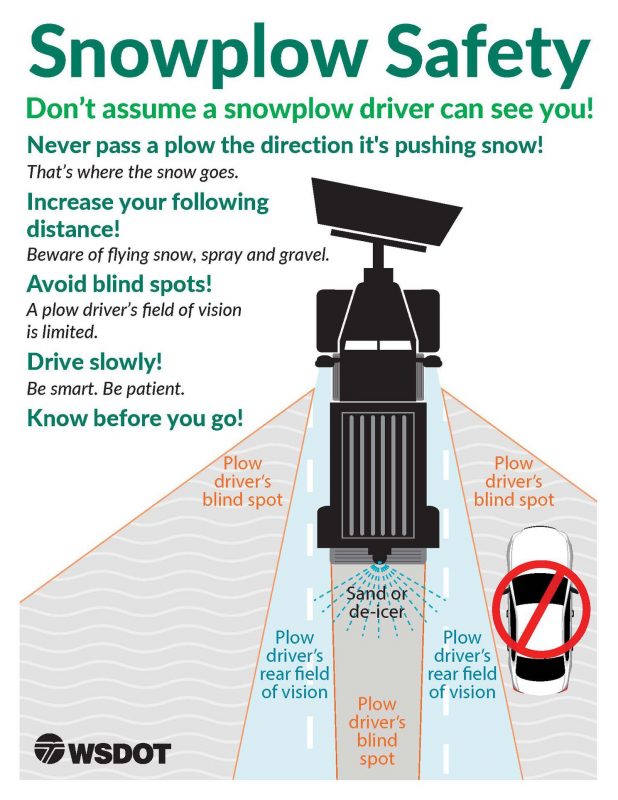Bellingham, like much of the Puget Sound region, is somewhere in between long, icy winters and rarely experiencing snow. Significant snowfall in an “in-between” area like Bellingham always raises questions about appropriate levels of snow-related services. When should the City plow streets, and which ones come first? How much snow equipment should the City own? What responsibility do community members have for taking care of themselves and their property when it snows?
City Services
The City’s Public Works Department personnel monitor winter conditions from several facilities that are staffed 24 hours a day. The City responds to snow and ice events as best as possible using eight plows/sanders and two anti-icing trucks.
Priority for plowing is based on safety concerns, focusing on major hazard areas, main arterials, and some secondary arterials, including routes that are essential for Police, Fire, Whatcom Transportation Authority (WTA) buses and Bellingham schools. Within this priority system, routes typically cleared first include Alabama Street, Meridian Street, Cornwall Avenue, Old Fairhaven Parkway, and the downtown Central Business District. Side streets are addressed only after the priority routes are completely plowed, salted and sanded, which means that some residential streets may be slippery or difficult to access during snow and ice events.
Your Responsibility
Winter weather can be dangerous. Please take precautions to protect yourself and our community by avoiding unnecessary travel, clearing sidewalks near your home, preventing frozen pipes and reporting issues to Public Works. These tips from the Centers for Disease Control and Prevention (CDC) can also help you prepare for winter storms and cold temperatures.
Resources
- Winter Shelters for Individuals Experiencing Homelessness
- Frequently Asked Questions
- SeeClickFix Reporting Tool
Contact
Email: AskPW@cob.org
Phone: (360) 778-7700




